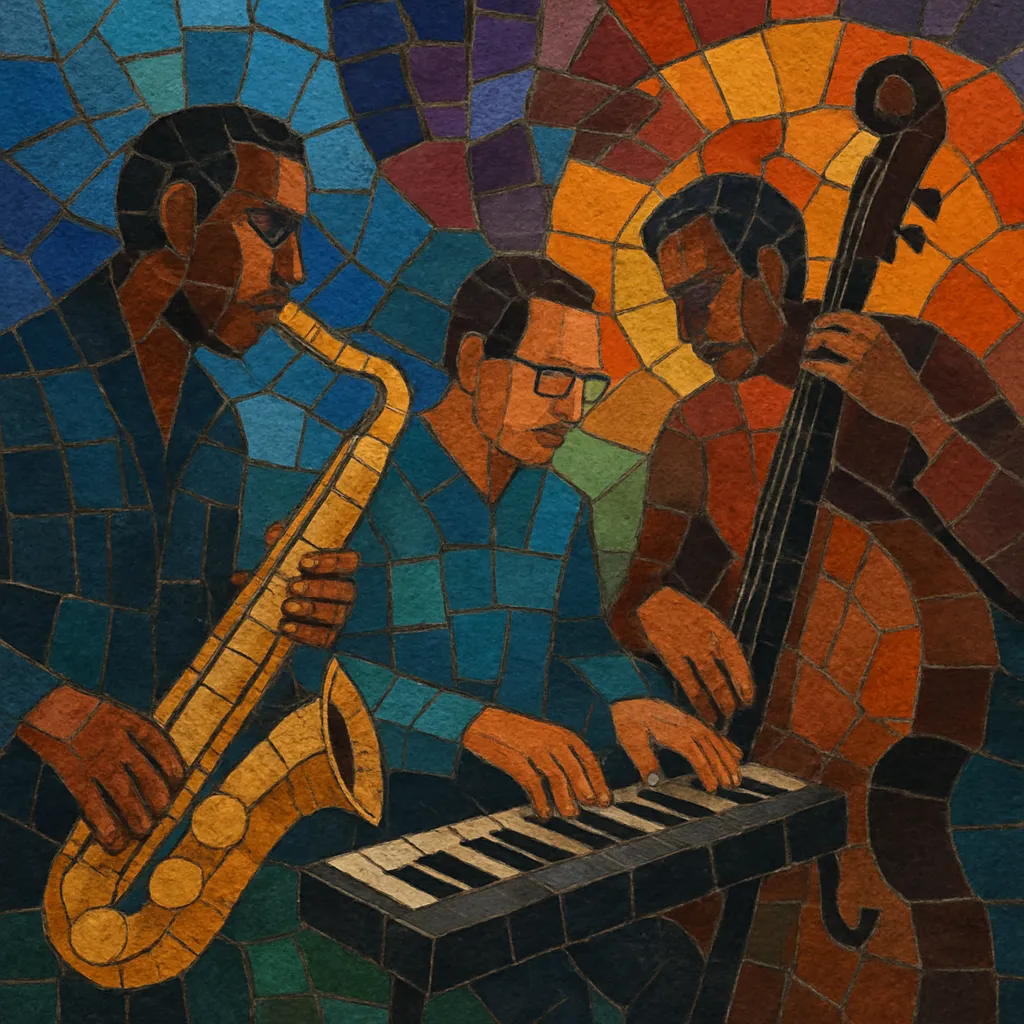New jazz (often overlapping with the term "nu jazz") blends modern electronic production with jazz harmony, improvisation, and ensemble playing.
It draws equally from house and broken-beat club culture and from the small-combo lineage of cool, modal, and fusion jazz. Expect extended chords, modal vamps, and textural sound design alongside drum programming, samples, and live horns, keys, and bass.
The style ranges from laid‑back, cinematic downtempo to dancefloor‑oriented 4/4, while preserving the improvisatory spirit and conversational interplay of jazz.
New jazz crystallized in the late 1990s as European jazz musicians and electronic producers began to merge club culture with jazz’s harmonic language and improvisation. The Scandinavian scene—especially Norway—was pivotal: artists around Jazzland Recordings (Bugge Wesseltoft, Nils Petter Molvær, Eivind Aarset) folded ambient, house, and drum & bass textures into modal jazz and spacious, ECM‑influenced atmospheres.
Around the same time, labels like Ninja Tune (UK), Compost (Germany), and Schema (Italy) nurtured a wave of records that sat between downtempo and small‑ensemble jazz. The Cinematic Orchestra (UK) presented a cinematic, rhythm‑led approach; Jazzanova (Germany) linked broken beat with sophisticated harmony; St Germain (France) brought house grooves and bluesy/jazz motifs to mainstream audiences; Koop (Sweden) and Nicola Conte (Italy) emphasized sampling, bossa/cool‑jazz colors, and modern production.
From the outset, the production toolkit—sampling, live recording, drum programming, and subtle sound processing—was integral. Artists favored Rhodes/Wurlitzer keys, upright or electric bass, brushed or programmed drums, and intimate horns, often recorded with warm, roomy ambience. Harmonically, extended tertian chords, modal vamps, and cool‑jazz voicings coexisted with loop‑based forms and club‑tempo grids.
In the 2000s, the style diversified: some artists moved toward dancefloor‑ready house/broken beat, while others explored cinematic downtempo and post‑rock textures. The 2010s saw a new generation (e.g., Yussef Kamaal, later solo work by Kamaal Williams, and groups like GoGo Penguin) emphasize live rhythm sections with electronic sensibilities, keeping the dialogue between jazz improvisation and contemporary production current.
New jazz helped normalize jazz harmony and improvisation within electronic and indie contexts, influencing beat scenes, jazz‑adjacent electronica, and the aesthetics of modern "jazztronica" and lo‑fi beatmaking. Its approach—treating jazz as a living language within modern production—continues to inform club‑ready and headphone‑oriented music alike.


